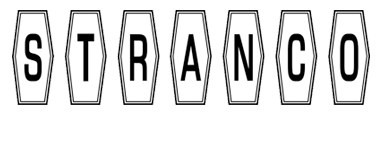As printed circuit boards are getting smaller and the industry grows more competitive, it is more important than ever for companies to invest in barcode labels that are durable enough to survive the high-heat and harsh chemicals present during the circuit board and electronic component manufacturing processes.
Stranco's S-428 1 mil and S-429 2 mil gloss white polyimide thermal transfer films are specifically designed to withstand the these volatile manufacturing environments. While both films are appropriate for surface mount board processes on either the top or bottom side of the board, the 1 mil S-428 is not recommended for auto print and apply applications. Both films can also be used on the top side of boards during mixed processes, though is recommended on the bottom side.
Additional benefits and applications for S-428 and S-429 material
These label materials are not just ideal for PCB manufacturing. Both are used in component tracking, IC labeling, asset tracking and high-resolution printing. The S-428 1 mil material in particular is the right choice for manufacturers needing low-profile labeling, where the dimensional stability of the label is essential for a successful application. Overall, these materials are well suited for any label that will be exposed to extreme temperatures.
"PCBs are smaller than ever before."
PCBs are smaller than ever before, making it important that any label material used offers high-resolution printing capabilities. Each of these materials high-resolution capabilities offer improved readability, no matter the size of the application. Too often, material coatings smear or soften during high-pressure washes or wave soldering, leaving manufacturers with illegible and unusable labels.
To ensure the success of the application with either materials, manufacturers must thoroughly cleanse and dry off any potential surface. Once firmly pressed to the surface of the product, pressure sensitive adhesives will provide the strongest bond should the surface be warm, as opposed to cool. Both the S-428 and S-429 should not be exposed to elevated temperatures during the application process.
The temperature rating for these materials in the short-term is 90 seconds at 572 degrees, the operating temperature is 5 minutes at 500 degrees and the long-term rating is 100 hours at 302 degrees.
Materials pass MIL-STD-202G, Notice 12, Method 215K requirements
According to the MIL-STD-202 Standard Electronic and Electrical Component Parts, its purpose is to establish "uniform methods for testing electronic and electrical component parts, including basic environmental tests to determine resistance to deleterious effects of natural elements and conditions surrounding military operations, and physical and electrical tests."
"Manufacturers need thermal transfer labels they can trust."
Essentially, the MIL-STD-202 standard remains one of the most valuable regulatory standards for PCB manufacturers and defense contractors today. Both the S-428 and S-429 topcoat, when used with the proper thermal transfer ribbon, meet the strict requirements outlined in MIL-STD-202G, Notice 12, Method 215K.
There are two purposes of the METHOD 215K test. The first is to verify that any color coding or markings do not discolor, fade or become illegible when faced with harsh solvents and processes during assembly. Meanwhile, the second purpose is to ensure that any protective coatings and materials are not degraded to the point where "electrical or mechanical integrity is disturbed" during the same process. In the harsh PCB assembly process, manufacturers need thermal transfer labels they can trust to remain legible and durable.
PCB manufacturers that wish to improve the readability of their labeling applications should consider Stranco's S-428 1 mil and S-429 2 mil gloss white polyimide thermal transfer films. Each are designed with a high-temperature permanent pressure sensitive acrylic adhesive and a high opacity, gloss white topcoat specifically designed for thermal transfer printing. To learn more about specific product applications or performance criteria, consumers should contact a Stranco representative.

